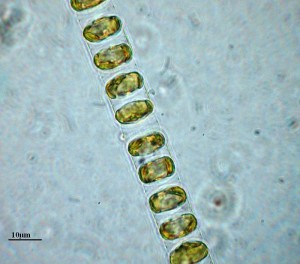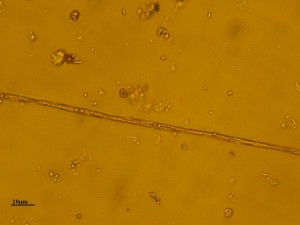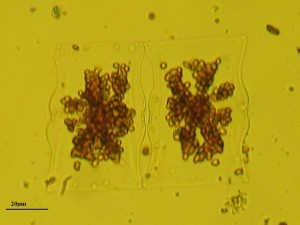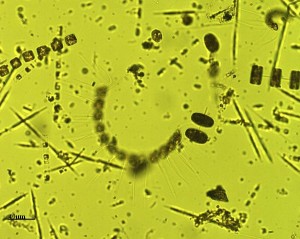Marine
Spring is coming in the water
February 29, 2012 by sfraser No Comments | Category Marine Directorate Science
This week we have seen the first signs of spring in our gardens as snowdrops, crocuses and daffodils have started to shoot through the soil. In the waters surrounding our shores we are also beginning to see the first signs of spring as the phytoplankton diatom population has begun to grow too. Below are some photographs of the more common diatoms that biologists at Marine Scotland Science expect to see over the next few months.
This is a chain of cells belonging to the diatom genus Skeletonema. They are one type of phytoplankton that are seen at the very onset of the spring bloom signalling that winter is over. As day length increases and the water column becomes more stable, conditions in the water become more favourable for phytoplankton growth.
This is a chain of cells belonging to the genus Chaetoceros. These diatoms are very common in Scottish waters. On rare occasions when they are very abundant in the water, these spines can irritate the gills of farmed fish.
Cells belonging to the genus Pseudo-nitzschia cannot be identified to species level using the light microscope. They are divided into two size categories (< and > 3µm diameter). Thin (<3µm) Pseudo-nitzschia cells comprise a large part of the spring bloom diatom community in Scottish waters. Species within the fat (>3µm) Pseudo-nitzschia category in Scottish waters ( P. australis and P. seriata) have been confirmed as producers of the shellfish toxin, domoic acid. They become more abundant in the late summer and autumn.
Mediopyxis helysia was only given a proper name by scientists in 2006. Currently it has only been observed at the Stonehaven monitoring site in theNorth Sea.
Phytoplankton samples are full of cells during the spring bloom period and the analysis time can be more than double that of samples taken during the winter.
The spring bloom is an important natural event in the marine ecosystem and produces a lot of the food for zooplankton to consume, allowing them to grow and reproduce. There is some concern within the scientific community that the timing of the spring bloom may be influenced by climate change. Warming waters may encourage the spring bloom to occur earlier. This means that the main growth of phytoplankton may be over before the zooplankton are ready to use this food to reproduce. Phytoplankton data from the Marine Scotland Science Coastal Ecosystem Monitoring sites will be used to assess this.
Submitted by Sheila Fraser and Eileen Bresnan
Tags: climate change, coastal monitoring, phytoplankton, spring bloom, zooplankton







Leave a comment